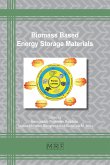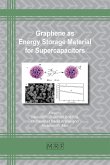In the Li-ion battery, Ions' transportation between positive and negative electrodes relies on organic-based electrolyte with a low flammable point. Therefore, use of this type of electrolyte lead to a lot of safety issues. In addition, the potential window of commercially available organic electrolyte is only up to about 4.5V, resulting that those cathode materials with high potentials cannot be used. Therefore, it is important to address above issues by developing multi-electron electrode materials, explore new nonflammable electrolyte and new battery formats. This book compiles nine comprehensive contributions from the principle of Li-ion batteries, cathode and anode electrode materials to future energy storage systems such as solid electrolyte for all-solid-state batteries and high capacity redox flow battery. The chapters provide the reader with comprehensive understanding of the fundamentals of energy storage through Faradic and non-Faradic mechanisms and most importantly materials and devices for future energy storage.








